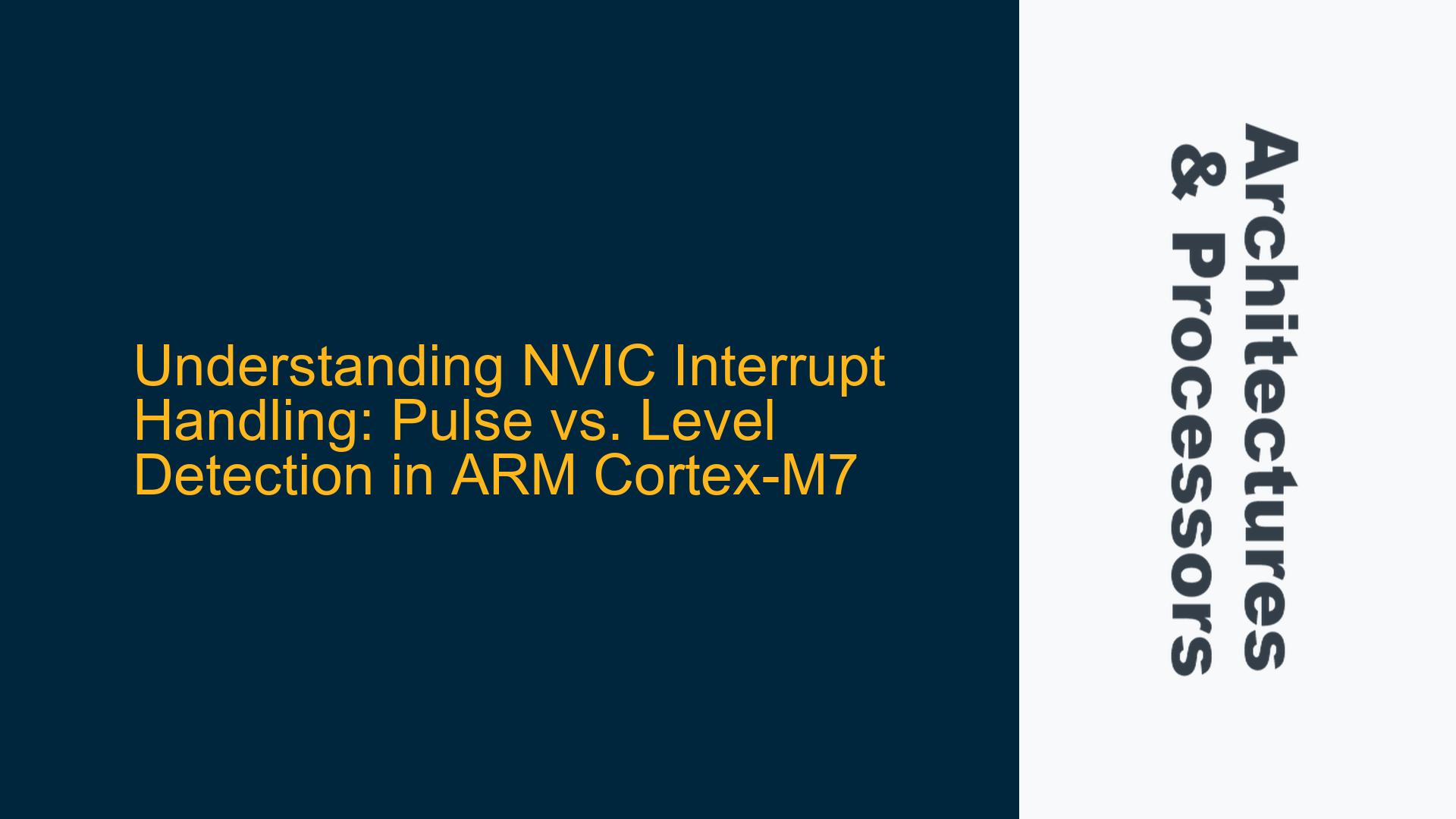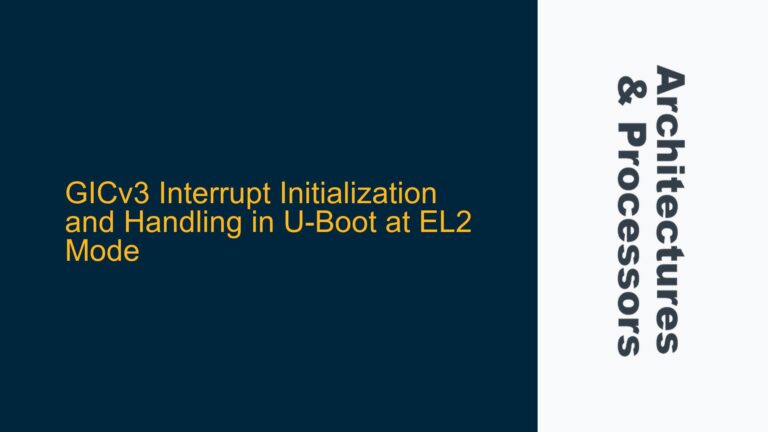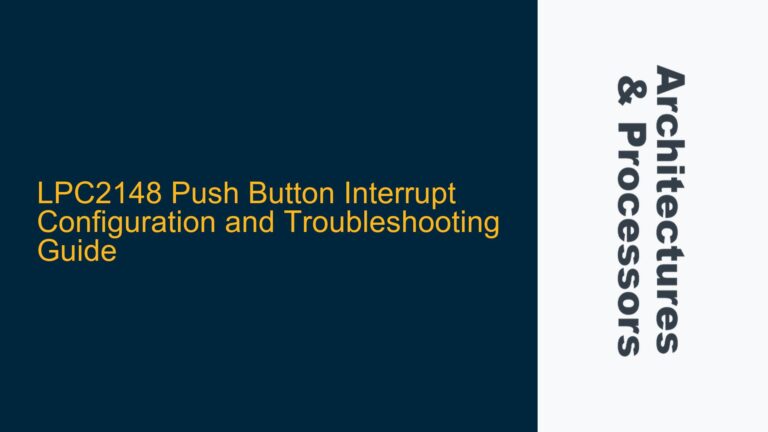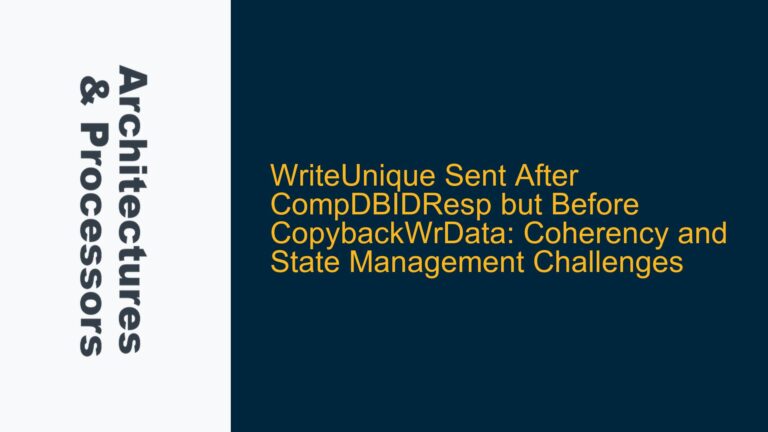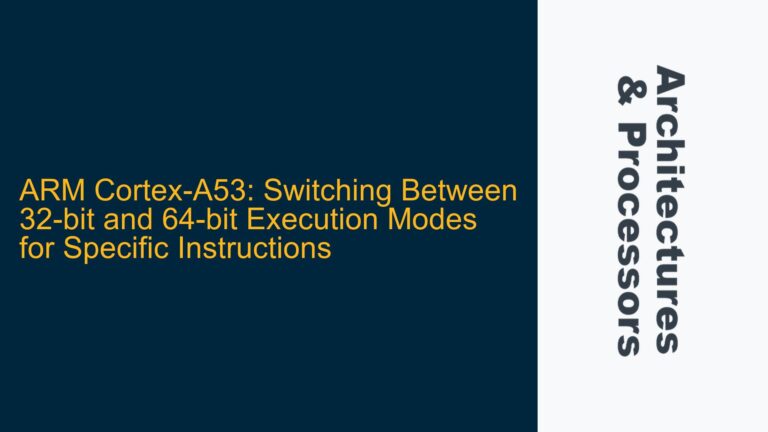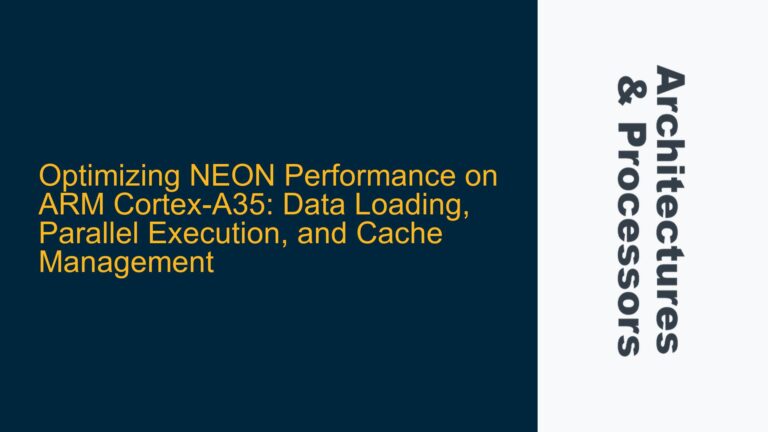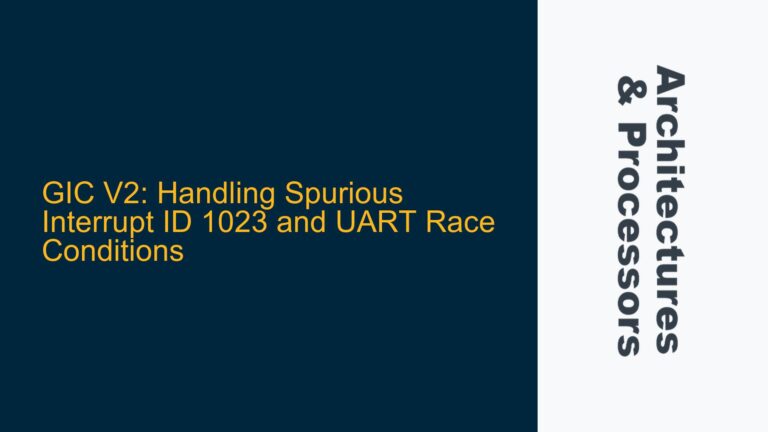ARM Cortex-M7 NVIC Interrupt Detection Mechanism
The ARM Cortex-M7 Nested Vectored Interrupt Controller (NVIC) is a critical component in managing interrupts for real-time embedded systems. One of the key functionalities of the NVIC is its ability to handle both pulse and level interrupts. Understanding how the NVIC distinguishes between these two types of interrupts is essential for designing robust and efficient embedded systems.
The NVIC operates by continuously monitoring the interrupt lines for activity. When an interrupt is detected, the NVIC latches the request and proceeds to handle it based on the nature of the interrupt signal. The distinction between pulse and level interrupts is crucial because it determines how the NVIC processes and clears the interrupt request.
In a pulse interrupt, the interrupt signal is a brief, transient spike that goes high and then low within a short duration. The NVIC must detect this spike and latch the request before the signal returns to its low state. Conversely, in a level interrupt, the interrupt signal remains high for an extended period, and the NVIC must continuously monitor the signal until it is explicitly cleared by the interrupt handler.
The NVIC’s ability to differentiate between these two types of interrupts is based on the timing and persistence of the interrupt signal. When an interrupt is detected, the NVIC latches the request and checks the state of the interrupt line. If the line goes low before the interrupt handler completes, the NVIC considers it a pulse interrupt. If the line remains high, the NVIC re-latches the request and continues to process it as a level interrupt.
Memory Barrier Omission and Cache Invalidation Timing
One of the potential issues that can arise in the NVIC’s handling of pulse and level interrupts is related to memory barriers and cache invalidation timing. Memory barriers are used to ensure that memory operations are completed in the correct order, which is critical for maintaining the integrity of the interrupt handling process. Cache invalidation, on the other hand, ensures that the processor’s cache does not hold stale data that could affect the interrupt handling.
In the context of the NVIC, memory barriers are essential for ensuring that the interrupt request is properly latched and processed. If a memory barrier is omitted, the NVIC may not correctly detect the state of the interrupt line, leading to incorrect handling of the interrupt. Similarly, cache invalidation timing is crucial for ensuring that the NVIC has the most up-to-date information about the interrupt signal.
When dealing with pulse interrupts, the NVIC must quickly latch the request before the signal returns to its low state. If the cache is not invalidated in time, the NVIC may miss the pulse and fail to process the interrupt. For level interrupts, the NVIC must continuously monitor the interrupt line, and any delay in cache invalidation can result in the NVIC processing stale data, leading to incorrect interrupt handling.
To mitigate these issues, it is essential to implement proper memory barriers and cache invalidation techniques. Memory barriers should be placed at strategic points in the code to ensure that the NVIC has a consistent view of the interrupt signal. Cache invalidation should be performed at the appropriate times to ensure that the NVIC is working with the most current data.
Implementing Data Synchronization Barriers and Cache Management
To ensure reliable interrupt handling in the ARM Cortex-M7 NVIC, it is crucial to implement data synchronization barriers and effective cache management strategies. Data synchronization barriers are used to enforce the correct ordering of memory operations, which is essential for maintaining the integrity of the interrupt handling process. Cache management involves ensuring that the processor’s cache does not hold stale data that could affect the NVIC’s ability to detect and process interrupts.
Data synchronization barriers can be implemented using the DSB (Data Synchronization Barrier) and ISB (Instruction Synchronization Barrier) instructions. The DSB instruction ensures that all memory accesses before the barrier are completed before any memory accesses after the barrier are executed. The ISB instruction ensures that all instructions before the barrier are completed before any instructions after the barrier are executed. These barriers should be placed at critical points in the code to ensure that the NVIC has a consistent view of the interrupt signal.
Cache management involves invalidating the cache at the appropriate times to ensure that the NVIC is working with the most current data. The DCIMVAC (Data Cache Invalidate by MVA to PoC) instruction can be used to invalidate specific cache lines, while the DCISW (Data Cache Invalidate by Set/Way) instruction can be used to invalidate entire cache sets. These instructions should be used strategically to ensure that the NVIC has access to the most up-to-date information about the interrupt signal.
In addition to data synchronization barriers and cache management, it is also important to consider the timing of interrupt handling. The NVIC must be able to quickly detect and process interrupts, especially in the case of pulse interrupts. This requires careful optimization of the interrupt handling code to minimize latency and ensure that the NVIC can respond to interrupts in a timely manner.
By implementing these strategies, developers can ensure that the ARM Cortex-M7 NVIC reliably detects and processes both pulse and level interrupts, leading to more robust and efficient embedded systems. Proper use of data synchronization barriers, cache management, and optimized interrupt handling code are essential for achieving this goal.
In conclusion, the ARM Cortex-M7 NVIC’s ability to distinguish between pulse and level interrupts is a critical feature for real-time embedded systems. Understanding the mechanisms behind this functionality and implementing the necessary safeguards, such as memory barriers and cache management, is essential for ensuring reliable interrupt handling. By following the guidelines outlined in this post, developers can optimize their systems for efficient and accurate interrupt processing, ultimately leading to more robust and reliable embedded applications.
